I remember this history lesson in 4th grade at the French Lycée & Collège in Landau, Germany. Our teacher had prepared a case study for us that was slightly outside the official syllabus. It dealt with an alliance of Alsatian towns in the Middle Ages, of which Landau was one. It was the first time I had discovered that there was such a thing as an ‘Alsace Decapolis’, and even back then, the name made me dream.
Today, we talk about the Décapole alsacienne with a touch of nostalgia. It may be a bygone golden age, but it still inspires many heritage lovers. Let’s set off to discover this unique and mythical league from the north to the south of Alsace.
The Alsace Decapolis: what is it?
Let’s take a look at some semantics before getting to the heart of the matter!
The origin of the word Decapolis
The words “decapole” (French) and “decapolis” (English) come from the Latin decapolis, borrowed from the ancient Greek δεκάπολις (decapolis). It is composed of :
- δέκα (deca) “ten” and
- πόλις (polis) “city”.
What was the Decapolis called back then?
I recently learned that the name “Alsace Decapolis” or “Décapole alsacienne” was unknown at the time of the league.
At the time, the Alsace Decapolis was referred to as :
- Gemeine Richstette = associated Empire towns, or
- Richstette gemeinlich im Elsass = associated Empire towns in Alsace
Today, in German, it is known as Zehnstädtebund or Dekapolis.
It was the historian Jean-Daniel Schoepflin (1694-1771) who popularised the name “Décapole” in L’Alsace illustrée, published in 1751:
“I call it Decapolis, because most often the confederation consists of ten towns. There are Decapolis in Italy, Asia Minor and Palestine”.
Indeed, we can’t help but think of the Decapolis of the Near East, a Hellenised region that stretched south and east of the Sea of Galilee. This league of 10 Greek cities can be found in the Gospels (Matthew 4:25, Mark 5:20 and Mark 7:31). It included :
- Damascus (Syria)
- Philadelphia (Amman in Jordan)
- Rhaphana (Capitolias, Bayt Ras in Jordan)
- Scythopolis (Baysan or Beit-Shean in Israel), the only city west of the River Jordan
- Gadara (Umm Qeis in Jordan)
- Hippos (Hippus or Sussita)
- Dion (Tell al-Ashari in Syria)
- Pella (Tabaqat Fahil in Jordan)
- Gerasa (Jerash in Jordan)
- Canatha (Qanawat in Syria)
In this way, the evocation of the ancient Decapolis gave a mythical character to the former league of 10 Alsatian towns.
This slightly nostalgic aspect of bygone prosperity attracts many tourists to these beautiful towns today. And let’s face it, these towns have lost none of their charm!

The characteristics of the Alsace Decapolis
In the 1340s, ten free Empire towns in Alsace decided to form a league for mutual aid and support, both military and economic.
On 28 August 1354, the future emperor of the Holy German Empire, Charles IV, formalised the alliance with the founding treaty of the League.
Military assistance
In a pact of military assistance, the ten towns promised each other mutual help if one was threatened by an external aggressor (enemy attack) or internal difficulties (revolt). They also agreed to settle any disputes between them amicably.

Economic assistance
The league provided financial assistance if one of the towns went bankrupt. This last feature makes the Alsace Decapolis a unique league.

Between 1425 and 1460, the ten allied towns came to each other’s aid more than a hundred times.
However, the ten towns all occupied the same position within the league. There was no hierarchy or subordination between them.
Moreover, the Alsace Decapolis did not prohibit its members from entering other alliances. The idea was to pursue a cautious policy while refusing to play a major role in the Upper Rhine region. It was, therefore, essential to maintain prosperity and peace.
This long-term stability sets the Decapolis apart from other urban confederations or alliances in the Holy Roman Empire.

The birth and organisation of the Decapolis
In 1342, ten Alsatian towns came together in Sélestat to create the Decapolis.
When it was created, the urban confederation included the following ten Alsatian towns:
- Haguenau (6,000 inhabitants in the 14th century),
- Wissembourg (3,500 inhabitants),
- Obernai (2,000 inhabitants),
- Rosheim (1,000 inhabitants),
- Sélestat (4,000 inhabitants),
- Colmar (6,000 inhabitants),
- Turckheim (1,000 inhabitants),
- Kaysersberg (1,000 inhabitants),
- Munster (1,000 inhabitants),
- Mulhouse (1,000 inhabitants)

As can be seen, the alliance did not cover all the towns in Alsace, of which there were 70 in the 14th century. However, the ten cities of the Alsace Decapolis had a significant advantage over other towns such as Saverne, Rouffach, Thann, Altkirch and Belfort: their status as cities of the Empire, which gave them a degree of autonomy from the surrounding powers.
In the early days, however, the league was evenly spread geographically. It comprised :
- Five towns in Lower Alsace (Wissembourg, Haguenau, Obernai, Rosheim and Sélestat)
- Five towns in Upper Alsace (Colmar, Turckheim, Munster, Kaysersberg, Mulhouse).

The organisation of the Alsace Decapolis
The Alsace Decapolis was placed under the patronage of a representative of the Germanic Roman Emperor in the region. In Alsace, the seat of the Landvogt (or Great Bailiwick of the Empire) was in Haguenau. This town became a sort of symbolic capital of the Decapolis.

Colmar was responsible for foreign affairs. Meetings of the deputies of the Decapolis were held in the large room on the first floor of the Koïfhus (or Old Customs House, built in 1480).

Due to its central location in Alsace, joint meetings were often held in Sélestat. Four to ten-day-long meetings were held each year. It was also in Sélestat that the League based its archives. Along with Strasbourg, Sélestat was the only town in Alsace with a guild of boatmen. Haguenau and Colmar each held a key to the safe in which the League archives were placed.

Why wasn’t Strasbourg part of the Alsace Decapolis?
Strasbourg was never part of the Alsace Decapolis. What’s more, the city enjoyed the status of a free city of the Empire, not a city of the Empire.
Yes, I know this is all getting complicated.
In the Middle Ages, there was a difference between :
- Une ville d’Empire (an Empire city) or Reichsstadt, and
- Une ville libre (a free city) or Freie Stadt.

Imperial Cities
The Free Imperial Cities (Reichsstadt) were directly answerable to the Emperor of the Holy Roman Empire. They enjoyed freedoms and privileges by their status. In addition to enjoying extensive autonomy, they exercised their own jurisdiction. As a result, they were on an equal footing with the princes.
Numerous small towns in southwest Germany were granted Free City status: Raversbourg, Rothenbourg, Schwäbisch Hall, Annweiler and our towns in the Alsace Decapolis. When the local lords died out in the 13th century, the towns often acquired imperial immediacy (i.e., they reported directly to the Holy Roman Emperor).

Free Cities
The Free Cities (Freie Stadt) had been placed under the temporal power of a prince-bishop (Cologne, Augsburg, Speyer, Basel, Strasbourg, etc.) before emancipating themselves from their hold (often at the cost of internal struggles and revolts). Unlike the Imperial Cities, the Free Cities were not obliged to contribute men or money to the crusades and other wars waged by the Emperor.
Towards the end of the Middle Ages, the rights and obligations of the free cities became similar to those of the Imperial Cities. This explains why the two terms are often confused.
The development of the Alsace Decapolis
The Alsace Decapolis survived the wars and crises of the 14th, 15th and 16th centuries: the Peasants’ War and the advent of the Reformation.
The Wars of Religion
The religious crisis of the 16th century had its origins in the rise of Protestantism in Europe. Events severely shook the Decapolis, but despite the different denominational choices of its members, the league remained united.
At the beginning of the 17th century, the Decapolis included :
- three Protestant towns (Wissembourg, Landau and Munster)
- two “mixed” towns (Haguenau, Colmar)
- five Catholic towns (Kaysersberg, Obernai, Rosheim, Turckheim, Sélestat).
The case of Seltz
Between 1358 and 1418, an 11th free town joined the Decapolis: Seltz.
![Seltz - rue du Général Schneider © Ralph Hammann - licence [CC BY-SA 4.0] from Wikimedia Commons](https://alsacelorraineguide.com/wp-content/uploads/2024/02/Seltz-rue-du-General-Schneider-©-Ralph-Hammann-licence-CC-BY-SA-4.0-from-Wikimedia-Commons-1024x768.jpg)
Seltz became a free town of the Empire in 1357, and the following year, Emperor Charles IV incorporated it into the Decapolis.
In 1414, Elector Louis III of the Palatinate took possession of Seltz, which became Palatine (until 1680). From then on, it was no longer a free town and left the Decapolis. Curiously, Seltz’s attacker was the Landvogt of Alsace, based in Haguenau, the capital of the Decapolis.
The case of Mulhouse
In 1515, following the War of the Six Deniers, the nascent Republic of Mulhouse preferred to join the Helvetic Confederation and become a related canton (Zugewandter Ort).
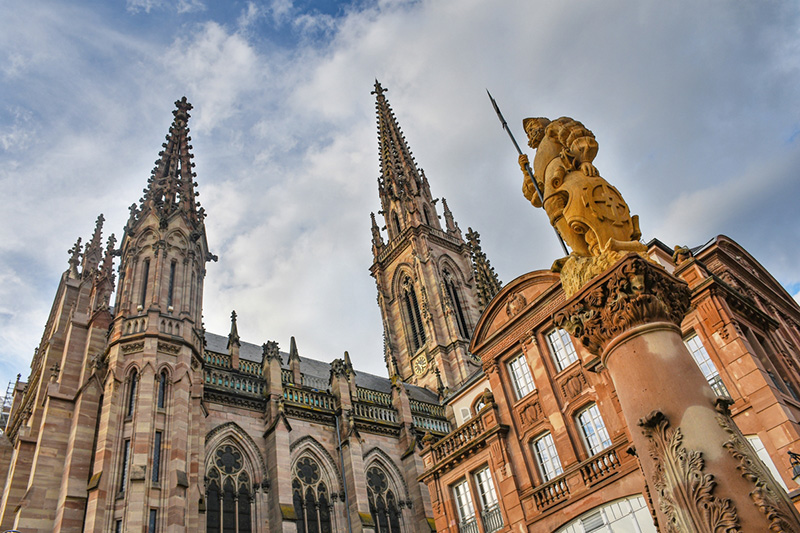
From then on, the Alsace Decapolis was no longer present in southern Alsace, with Colmar becoming the southernmost town in the league.
The case of Landau
The entry of Landau, a prosperous Palatine town thanks to the wine trade, offset Mulhouse’s defection. Emperor Charles V made its entry official in 1521, ten years after placing it under the protection of the Haguenau provostry.
Landau’s participation in the Decapolis meant it shared French Alsace’s destiny.

Under the Treaties of Westphalia (1648), Landau became French, and Vauban fortified it by creating the Landau fortress (1688-1691). It was not until 1815 that Landau became part of the Kingdom of Bavaria and the German Reich in 1871. Having remained part of Alsace for 304 years (1511-1815), many consider Landau to be the only part of the historic Alsace that is now in Germany.
Today, Landau in der Pfalz is located 20 km from the French border on the German wine route. This town in the Palatinate (population 46,600) is twinned with Haguenau.
![The surroundings of Landau © King Otto - licence [CC BY-SA 3.0] from Wikimedia Commons](https://alsacelorraineguide.com/wp-content/uploads/2024/02/Landau-surroundings-LR-©-King-Otto-licence-CC-BY-SA-3.0-from-Wikimedia-Commons-1024x685.jpg)
The end of the Alsace Decapolis
The Treaty of Westphalia, signed in Münster on 24 October 1648, allocated Alsace to the Kingdom of France.
However, the provisions of the treaty were unclear and open to ambiguity.
The Habsburgs ceded to the King of France all the territories they owned in Alsace (the Sundgau), as well as the rights they enjoyed there (the landgraviate of Upper Alsace, the imperial bailiwick at Haguenau).
However, the Treaty of Münster stipulated that the free towns were not subject to French law but to that of the Holy Roman Empire.
This ambiguity was removed by the Treaty of Nijmegen in 1678. Under the terms of the agreement, the Alsace Decapolis ceased to exist, and the member towns became French for good.

Visiting the towns of the Alsace Decapolis
To conclude this article, here are a few views of the 12 towns that were members of the Alsace Decapolis (from north to south).
Landau
![Rathausplatz, Landau in der Pfalz © Tilman2007- licence [CC BY-SA 4.0] from Wikimedia Commons](https://alsacelorraineguide.com/wp-content/uploads/2024/02/Landau-in-der-Pfalz-Rathausplatz-©-Tilman2007-licence-CC-BY-SA-4.0-from-Wikimedia-Commons-1024x684.jpg)
![St Mary's Church and the Gründerzeithaus in Landau © Immanuel Giel - licence [CC BY 3.0] from Wikimedia Commons](https://alsacelorraineguide.com/wp-content/uploads/2024/02/Landau-Marienkirche-und-Grunderzeithaus-©-Immanuel-Giel-licence-CC-BY-3.0-from-Wikimedia-Commons-1024x685.jpg)
![Rathausplatz, Landau in der Pfalz © Ralph Hammann - licence [CC BY-SA 3.0] from Wikimedia Commons](https://alsacelorraineguide.com/wp-content/uploads/2024/02/Landau-Rathausplatz-©-Ralph-Hammann-licence-CC-BY-SA-3.0-from-Wikimedia-Commons-1024x685.jpg)
Discover the fair homeland of Ami Fritz.
Wissembourg



Seltz
![Seltz town hall © Ralph Hammann - licence [CC BY-SA 4.0] from Wikimedia Commons](https://alsacelorraineguide.com/wp-content/uploads/2024/02/Seltz-©-Ralph-Hammann-licence-CC-BY-SA-4.0-from-Wikimedia-Commons-1024x768.jpg)
![Seltz - the nave of Saint Etienne church © Ralph Hammann - licence [CC BY-SA 4.0] from Wikimedia Commons](https://alsacelorraineguide.com/wp-content/uploads/2024/02/Seltz-Eglise-Saint-Etienne-©-Ralph-Hammann-licence-CC-BY-SA-4.0-from-Wikimedia-Commons-1024x683.jpg)
![Half-timbered house, Seltz © Ralph Hammann - licence [CC BY-SA 4.0] from Wikimedia Commons](https://alsacelorraineguide.com/wp-content/uploads/2024/02/Seltz-2-©-Ralph-Hammann-licence-CC-BY-SA-4.0-from-Wikimedia-Commons-1024x768.jpg)
Haguenau
![Fishermen's Tower, Haguenau © Szeder László - licence [CC BY-SA 4.0] from Wikimedia Commons](https://alsacelorraineguide.com/wp-content/uploads/2024/02/Haguenau-Tour-des-Pecheurs-©-Szeder-Laszlo-licence-CC-BY-SA-4.0-from-Wikimedia-Commons-1024x768.jpg)
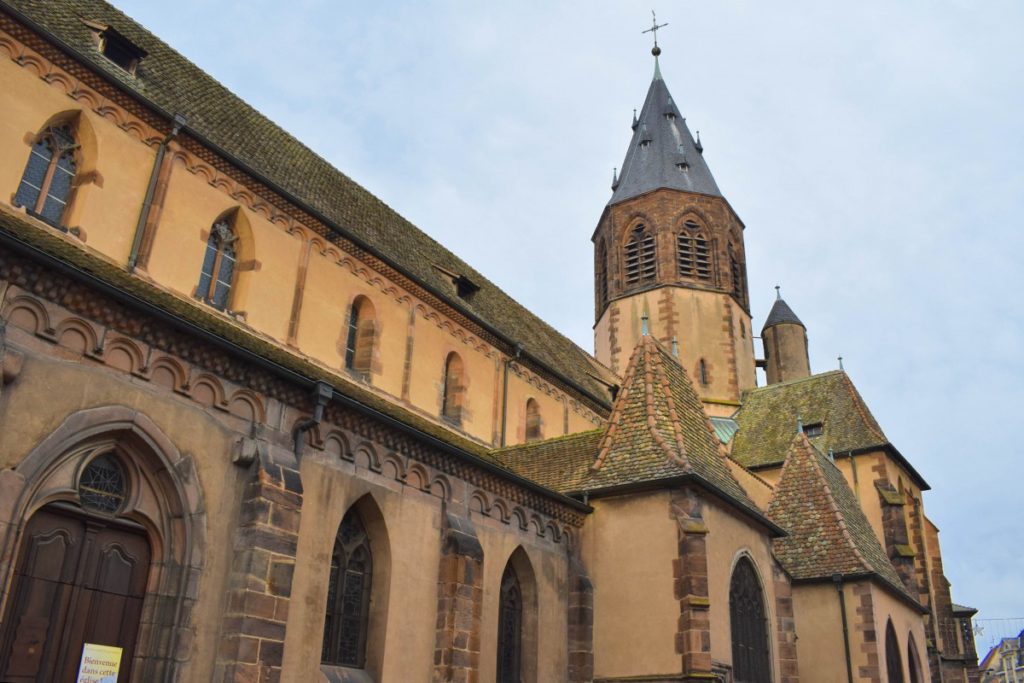
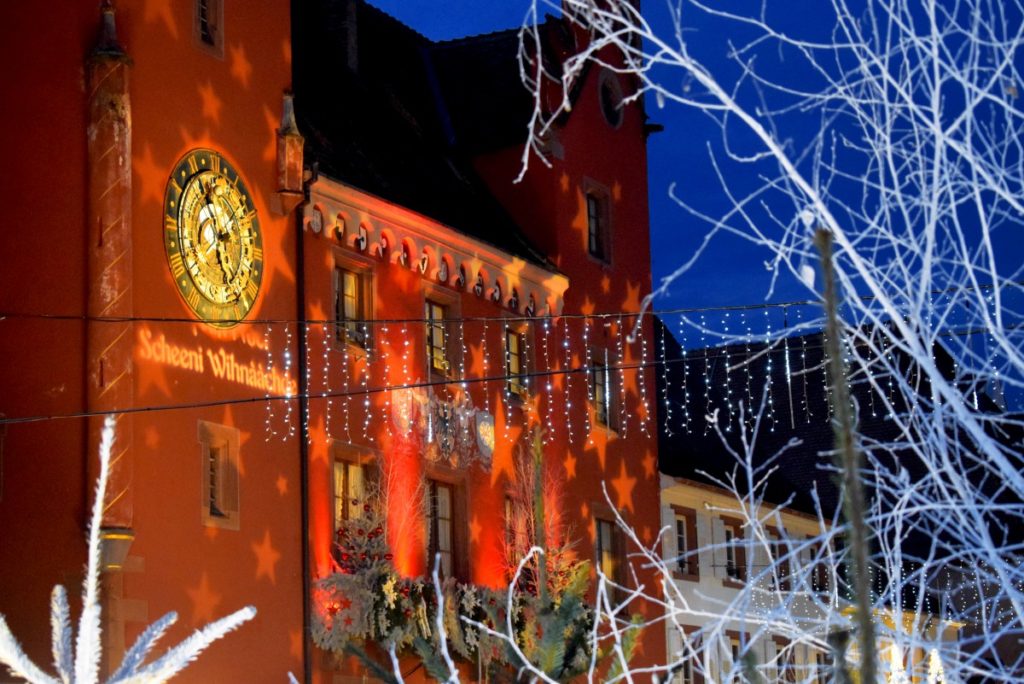
Obernai

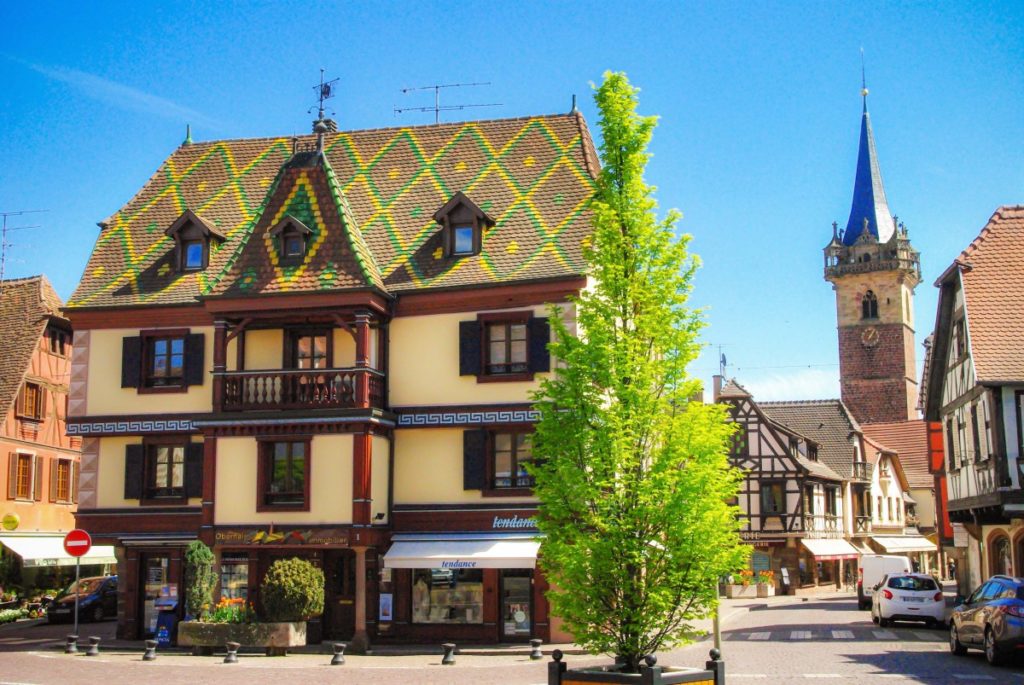

Rosheim



Sélestat



Kaysersberg



Turckheim
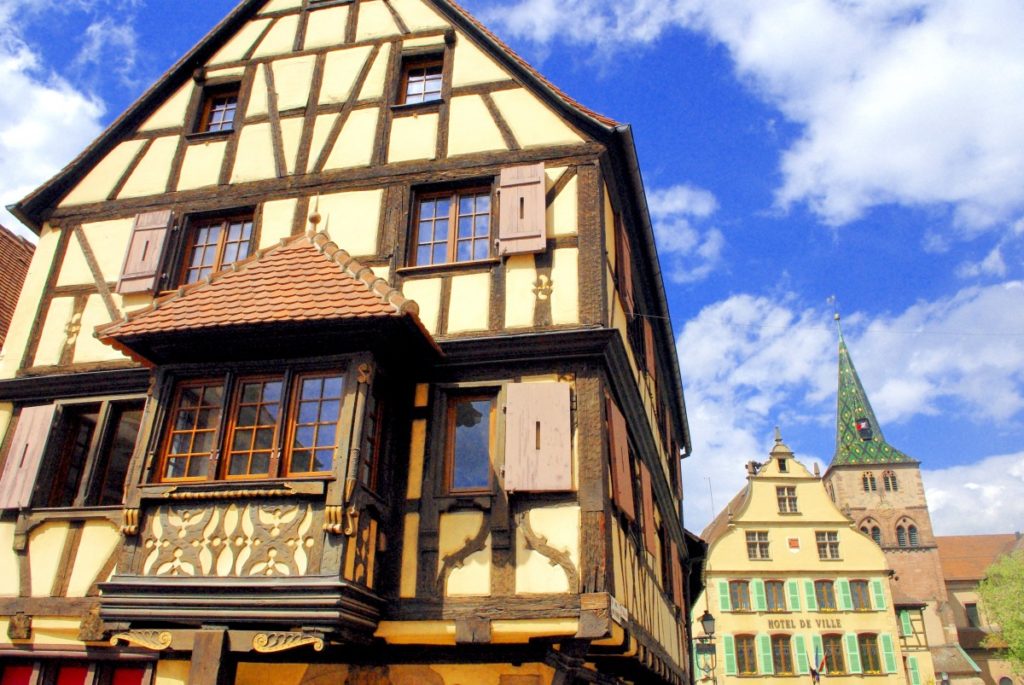

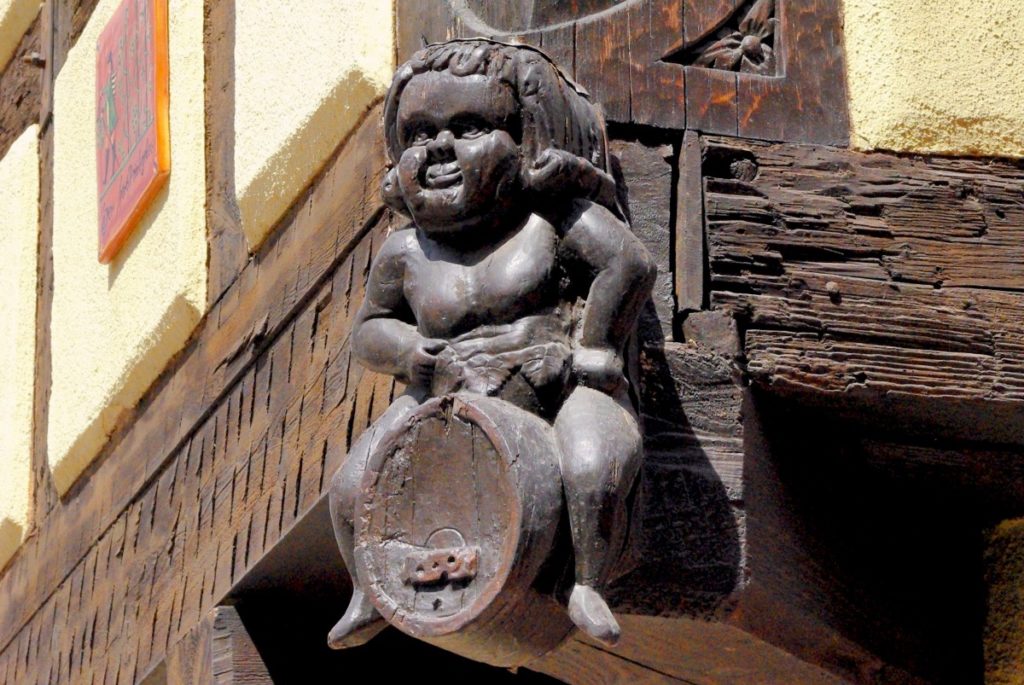
Munster



Colmar

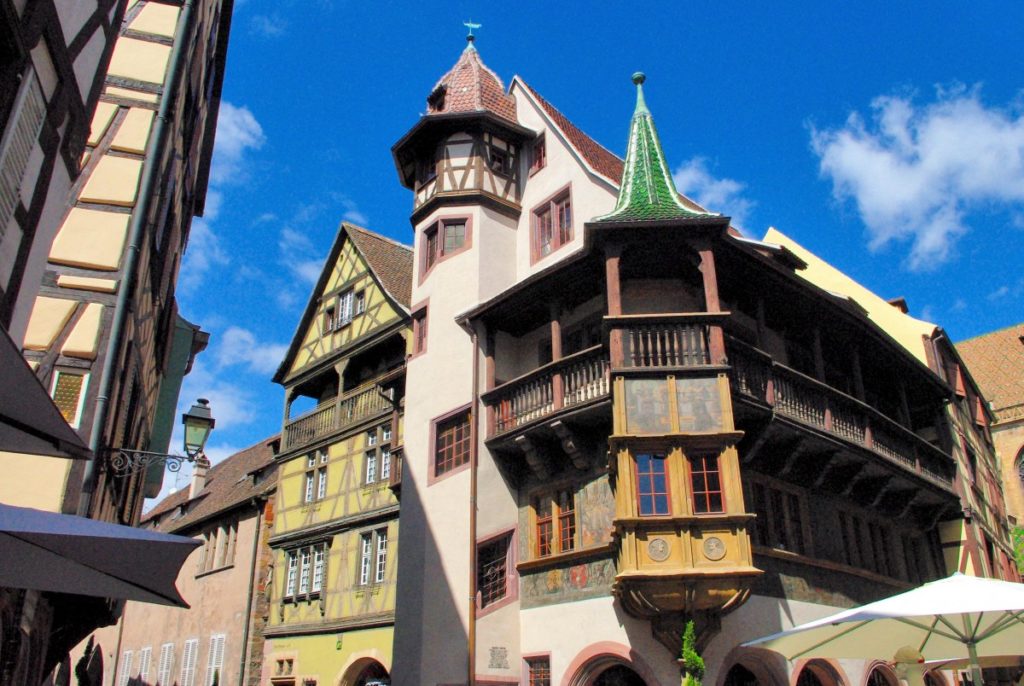

Mulhouse

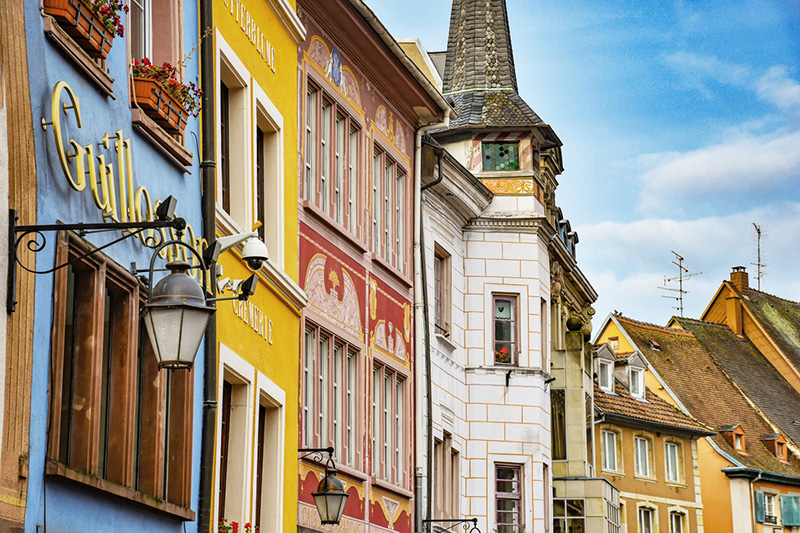

To find out more
Reference sites:
- Read this article in French on our blog Mon Grand-Est 🇫🇷
- La Décapole on the site Histoire d’Alsace
- The French Wikipédia page dedicated to the League
- The article of the site Universalis.fr
- The Decapolis on the site of L’institut d’histoire de l’Alsace
A pin for Pinterest
Did you enjoy reading this article? If so, please share it with your friends on Facebook, Twitter or Pinterest 🙂


![Map of the biblical Decapolis © Nichalp - licence [CC BY-SA 2.5] from Wikimedia Commons](https://alsacelorraineguide.com/wp-content/uploads/2024/02/Decapolis-Map-©-Nichalp-licence-CC-BY-SA-2.5-from-Wikimedia-Commons.jpg)